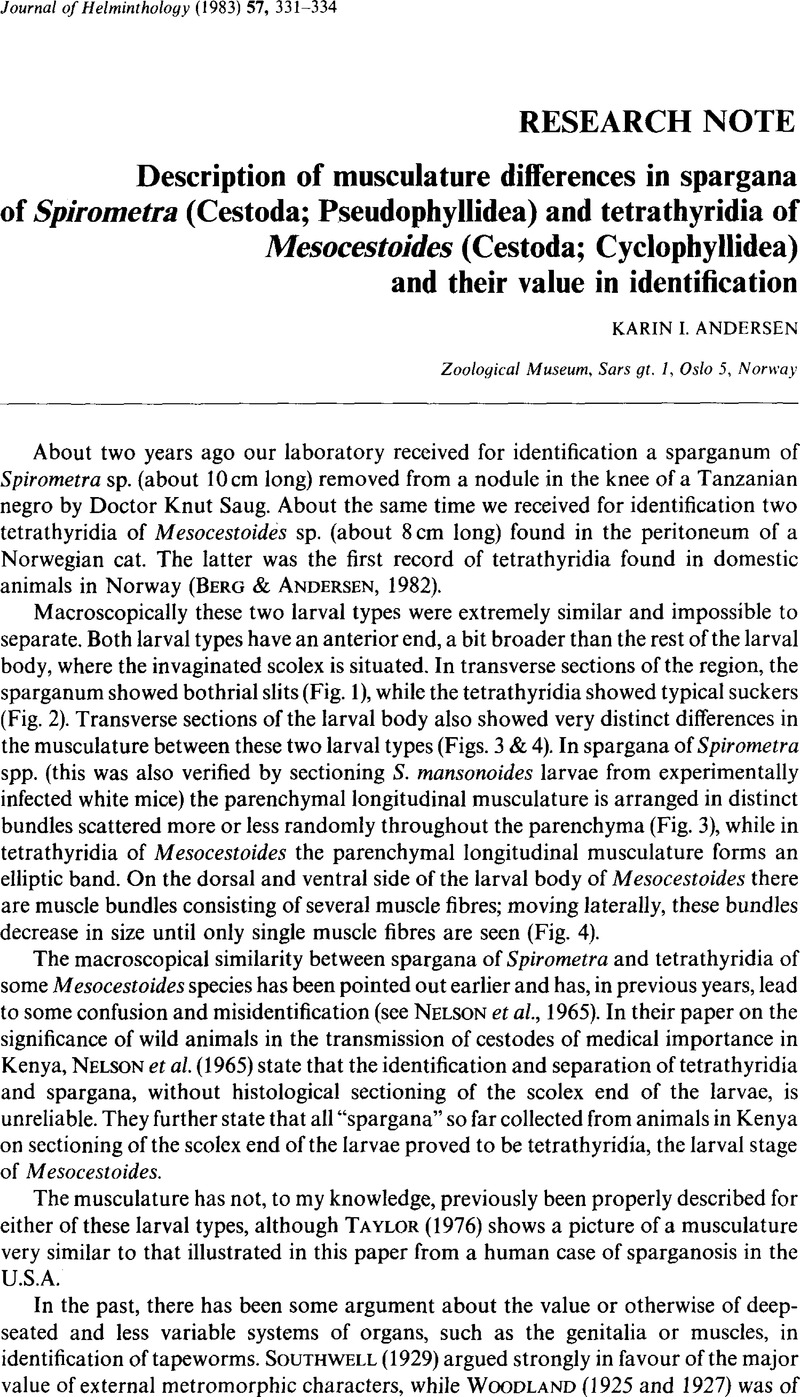Crossref Citations
This article has been cited by the following publications. This list is generated based on data provided by Crossref.
BEVERIDGE, I.
FRIEND, SCE
JEGANATHAN, N.
and
CHARLES, J.
1998.
Proliferative sparganosis in Australian dogs.
Australian Veterinary Journal,
Vol. 76,
Issue. 11,
p.
757.
Wiwanitkit, Viroj
2005.
A review of human sparganosis in Thailand.
International Journal of Infectious Diseases,
Vol. 9,
Issue. 6,
p.
312.
Yang, Jae Wook
Lee, Jeong Heon
and
Kang, Mi Seon
2007.
A Case of Oular Sparganosis in Korea.
Korean Journal of Ophthalmology,
Vol. 21,
Issue. 1,
p.
48.
Liu, W.
Zhao, G.H.
Tan, M.Y.
Zeng, D.L.
Wang, K.Z.
Yuan, Z.G.
Lin, R.Q.
Zhu, X.Q.
and
Liu, Y.
2010.
Survey of Spirometra erinaceieuropaei spargana infection in the frog Rana nigromaculata of the Hunan Province of China.
Veterinary Parasitology,
Vol. 173,
Issue. 1-2,
p.
152.
Khurana, Sumeeta
Appannanavar, Suma
Bhatti, Harinder Singh
and
Verma, Sanjay
2012.
Sparganosis of liver: a rare entity and review of literature.
BMJ Case Reports,
p.
bcr2012006790.
Dhaliwal, B. B. Singh
and
Juyal, Prayag Dutt
2013.
Parasitic Zoonoses.
p.
65.



